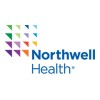
Doppler and Biological Second Trimester Placental Insufficiency Screening
Pre-EclampsiaFetal Growth Retardation1 moreTo assess the role of uterine artery and maternal serum leptin and lipids and their combination in screening for pre-eclampsia and small-for-gestational-age (SGA) fetuses at 20-24 weeks of gestation

The Role of Pentraxin 3 and Cathepsin B Levels in Preeclamptic Pregnancy
Pre-EclampsiaCathepsin B Level1 moreIn this study, the investigator aim was to compare Cathepsin B and Pentraxin 3 levels measured from maternal serum of pregnant women diagnosed with preeclampsia in the second trimester, the effects of these levels on maternal/ fetal outcomes and the composite results of Cathepsin B and Pentraxin 3 levels alone or together and contribute to the literature in this area.

The Correlation Between Vitamin A / E Levels and Preeclampsia
PreeclampsiaVitamin A Deficiency1 moreVitamin A (VA) and vitamin E (VE) are fat-soluble vitamins and indispensable substances in life activities. VA plays an important role in visual function, normal formation and development of epithelial cells, development and growth of bones, immune function and reproductive health. VA is of great significancCe for the growth and development of embryonic cells, especially for the development of fetal vertebrae, spinal cord, limbs, heart, eyes and ears. The lack of maternal VA will lead to the stunted development of fetal organs and tissues, and even fetal developmental malformation. In addition, VA has a protective effect on neonatal lung maturation.VA deficiency can cause the decrease in the activity of enzymes needed to catalyze the formation of progesterone precursors in pregnant women, reduce the production of steroids in adrenal glands, gonads and placenta, and seriously affect the functions of multiple organs such as heart, liver and skeletal muscle in pregnant women. VE, also known as tocopherol, has non-enzymatic antioxidant function, and maintains the balance of REDOX reaction in vivo by efficiently removing free radicals generated by lipid peroxidation.VE can increase the synthesis of nitric oxide (NO) in endothelial cells and improve vascular endothelial function. Long-term administration of VE can improve the impaired endothelium-dependent vasodilatory function in patients.VE can promote sex hormone secretion, improve fertility and prevent abortion. Pregnancy women the body's metabolism, increases produce free radicals, lipid peroxidation, low levels of VE will result in the accumulation of excess free radicals, cause the placenta aging, vascular endothelial damage, increase the risk of the occurrence of PHI and adverse outcome rate, as well as the membranes of cell membrane damage, increase the risk of premature rupture of membranes. Gestational hypertension is a group of diseases with both pregnancy and elevated blood pressure, and is the main cause of increased maternal and perinatal mortality, mainly including gestational hypertension, preeclampsia PE, and eclampsia, as well as chronic hypertension with preeclampsia and chronic hypertension with pregnancy. The cause of PE is unknown, but studies have found that it may be related to insufficient recast of spiral uterine arterioles, excessive activation of inflammatory immune system, damage of vascular endothelial cells, genetic factors, nutritional deficiency and insulin resistance. Recent studies have found that free radical oxidative damage may also be one of the main reasons for the occurrence and development of PE. PE occurs, the placenta bed vasospasm, ischemia, angiogenesis blocking and endothelial atherosclerotic changes, local immune cell activity, make produce free radicals increases, interfere with the vascular endothelial cell function, reduce vascular relaxation material synthesis, and shrink blood vessels increase material synthesis, promote vascular spasm, platelet condensed state is changed, thus appeared a series of PE. Previous studies have shown that oxygen free radicals and lipid peroxides are increased in PHI patients, while the levels of VA and VE are closely related to the antioxidant capacity of the body, and their lack can lead to the imbalance of the homeostasis of redox reaction in multi-tissue cells in the body. Since both VA and VE belong to fat-soluble vitamins and are widely distributed in daily food, whether their effects on the occurrence and development of PE are independent or combined will be a question for us to explore. Therefore, this study intends to evaluate the correlation between VA, VE and VA+VE and PE occurrence through multi-center clinical studies, and explore and summarize the feasibility of VA and VE in PE adjuvant treatment.

Vanadium in Late-onset Preeclampsia
PreeclampsiaIntroduction: Cadmium, lead and vanadium important pollutants produced from anthropogenic activities, has been suggested to be embryotoxic and fetotoxic in a lot of studies. However, the causes of preeclampsia are little known and heavy metals merit further investigation. We tested whether late-onset preeclampsia (L-PrE) was associated with exposure to these metals. Methods: This study was designed to determine maternal plasma cadmium, lead and vanadium concentrations in women with L-PrE (n=46) compared to those of normotensive women (n=46). These three heavy metals concentrations measured using inductively coupled plasma-mass spectrometry were compared.

Early Vascular Adjustments to Prevent Preeclampsia
PreeclampsiaSmall for Gestational Age at Delivery1 moreWomen destined to develop gestational hypertensive complications often exhibit deviant hemodynamic adaptation patterns before overt clinical disease. Gestational hypertension and late onset preeclampsia are associated with an exaggerated rise in cardiac output on top of a higher prepregnant value, whereas a shallow rise in cardiac output and the lack of a peripheral resistance drop predisposes to the much less common early onset-preeclampsia along with impaired fetal growth. Early treatment of altered cardiac output and peripheral resistance adjustments might prevent development of gestational hypertensive complications. The investigators aim to evaluate early cardiovascular adjustments during pregnancy in a high-risk population, and to pharmaceutically adjust deviant cardiovascular adaptations with beta-blockade, centrally acting sympatholytic agents or vasodilating agents when appropriate to prevent adverse effects on neonatal birth weight.

Optic Nerve Sheath Diameter for Volume Status Prediction in Severe Preeclampsia
Pre-EclampsiaA quick, non-invasive, bedside test to assess fluid status of patients with severe preeclampsia would be very helpful to ICU clinicians severe preeclampsia is associated with an increase in extravascular lung water (EVLW), which can be identified by lung ultrasound before appearance of clinical signs of pulmonary edema but this technique still requires several measurements and could be time consuming. Optic ultrasound is also a safe and repeatable diagnostic tool, which is even quicker and simpler to perform than lung ultrasound. Increased ONSD is associated with increased ICP and it can indirectly reflect the state of intracranial edema that could be a part of generalized edema. More data on the correlation between ONSD and markers of fluid status (EVLW by ultrasound) are needed before ONSD measurements can be recommended as a guide to fluid management in preeclampsia.

Thiol/Disulphide Homeostasis and Preeclampsia
PreeclampsiaObjective: To evaluate serum evaluate thiol/ disulfide levels in preeclampsia and address its relationship with its severity. Methods: This prospective study will include 50 pregnancies complicated with preeclampsia and 50 healthy pregnancies. The blood for analysis will obtain at the admission and serum thiol/ disulfide levels will measure using commercially available reagent kits. The continuous values were evaluated using Student's t-test, and categorical values were evaluated using the Chi-square test. P values < .05 were accepted as significant.

Aspirin for Prevention of Preeclampsia in Healthy, Nulliparous Obese and Overweight Pregnant Women...
PreeclampsiaPreeclampsia is a pregnancy-specific syndrome that affects 3 - 5% of pregnancies. It is one of the main causes of maternal, fetal and neonatal morbidity and mortality, resulting in approximately 40,000 maternal deaths worldwide each year. Fortunately, preeclampsia-related deaths have been reduced remarkably in recent decades thanks to improvements in antenatal care and therapeutic interventions, and prophylactic use of low-dose aspirin in women who are at a higher risk of developing preeclampsia. Effective prevention is rarely available for obstetric complications. Aspirin is one of them. Several meta-analyses456 suggested that aspirin prescription reduced the risk of preeclampsia and fetal growth restriction by 40-50% in an aspirin-dose-response pattern.

Lung Ultrasound Patterns Preeclampsia
Pregnancy ComplicationsUltrasound Therapy; Complications2 moreEvaluation of lung ultrasound as a diagnostic tool in pregnant patients.

microRNAs Role in Pre-eclampsia Diagnosis
PreeclampsiaPre-eclampsia is one of the most threatening pregnancy complications. So far neither a secure, competent therapy for PE nor effective biomarkers for a premature discovery has been achieved.The aim of our study was to identify miRNAs 136, 494 and 495 genes expression in exosomes of peripheral blood compared to umbilical cord mesenchymal stem cells conditioned media released exososomes in patients with PE, as valuable markers for PE early prediction.
